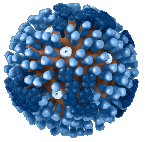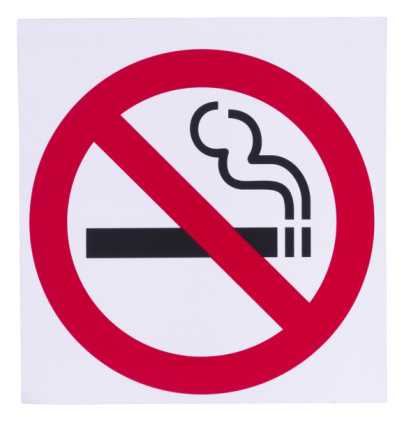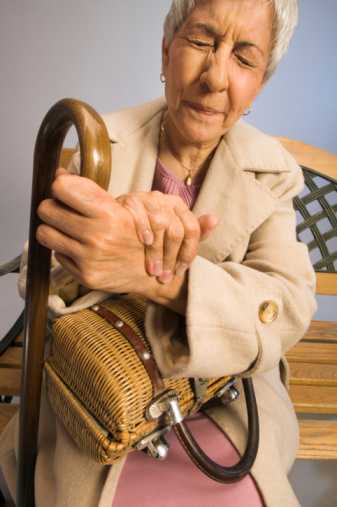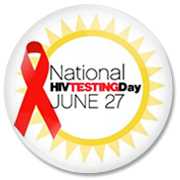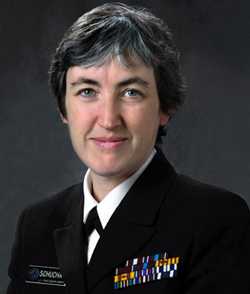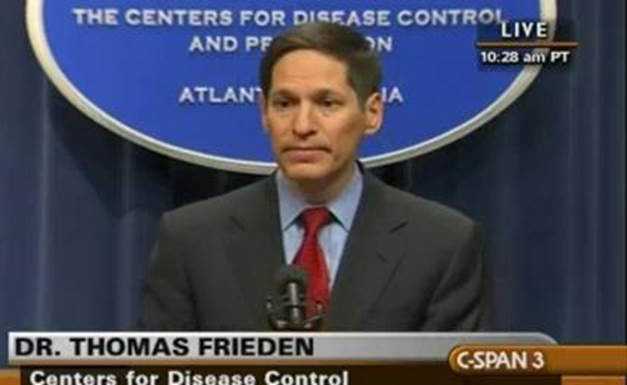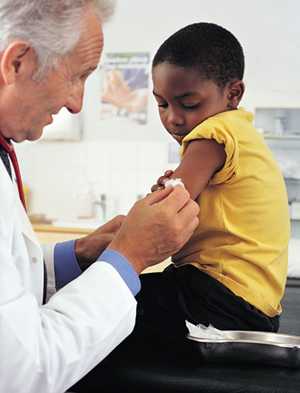 ShareCompartir
ShareCompartir
"Have You Heard?" 2013
Jan
Pregnant Women Need a Flu Shot!
January 28, 2013
If you're pregnant, a flu shot is your best protection against serious illnesses caused by the flu. A flu shot can protect pregnant women, their unborn babies, and even the baby after birth. The flu is more likely to cause severe illness in pregnant women than in women who are not pregnant. Changes in the immune system, heart and lungs during pregnancy make pregnant women more prone to severe illness from flu, which can lead to hospitalization or even death. A pregnant woman with the flu also has a greater chance of serious problems for her unborn baby, including miscarriage or preterm birth.
Energy Drinks
January 21, 2013
Energy drinks are beverages that typically contain caffeine, other plant-based stimulants, simple sugars, and other additives. They are very popular among youth and are regularly consumed by 31 percent of 12- to 17-year-olds and 34 percent of 18- to 24-year-olds. When alcoholic beverages are mixed with energy drinks, a popular practice among youth, the caffeine in these drinks can mask the depressant effects of alcohol. Drinkers who consume alcohol mixed with energy drinks are 3 times more likely to binge drink (based on breath alcohol levels) than drinkers who do not report mixing alcohol with energy drinks.
About Thyroid Disease
January 14, 2013
Thyroid disease is common, especially among older people and women. The thyroid gland, located in the front of the neck just below the Adam's apple, takes iodine from the diet and makes thyroid hormone. Thyroid hormone affects a person's physical energy, temperature, weight and mood. Checking for thyroid disease is similar to other kinds of medical evaluations. The doctor considers the patient's medical history, examines the thyroid and may order a blood test or other diagnostic tests.
National Glaucoma Awareness Month
January 7, 2013
January is National Glaucoma Awareness Month. Glaucoma is a group of disorders that damage the eye’s optic nerve and can lead to vision loss. According to the National Eye Institute, glaucoma affects approximately 4 million people in the United States, and nearly half of those with glaucoma are not aware that they have the disease. Glaucoma occurs when the normal fluid pressure inside the eyes slowly rises. However, recent findings now show that glaucoma can occur with normal eye pressure. With early treatment, you can often protect your eyes against serious vision loss.
Influenza Division Weekly Influenza Surveillance Report (Week 52)
January 4, 2013
Influenza activity continues to increase in the United States and most of the country is now experiencing high levels of influenza-like-illness (ILI), according to CDC’s latest FluView report. “Reports of influenza-like-illness (ILI) are nearing what have been peak levels during moderately severe seasons,” according to Dr. Joe Bresee. CDC continues to recommend influenza vaccination and antiviral treatment when appropriate at this time.
Feb
Teen Dating Violence Awareness Month
February 25, 2013
February is Teen Dating Violence Awareness Month. Dating violence can happen to any teen, anytime, anywhere. But it doesn't have to happen at all. Learn how to prevent teen dating violence with CDC's online resources. Did you know that in the past 12 months, one in 10 teens report being hit or physically hurt on purpose by a boyfriend or girlfriend at least once? And nearly half of all teens in relationships say they know friends who have been verbally abused.
Protect your unborn or newborn baby from infection
February 19, 2013
If you are pregnant—or know anyone who is—you need to know about group B strep. About a quarter of all women carry the bacteria that cause group B strep infection. Group B strep bacteria are usually not harmful to you and won't make the people around you sick. But these bacteria can be very dangerous for your newborn. Babies can get very sick and even die if their mothers pass group B strep bacteria to them during childbirth. That's why it's so important for you to get tested for group B strep each time you get pregnant.
National Heart Month
February 11, 2013
February is American Heart Month. Cardiovascular disease is the leading cause of death in the United States; one in every three deaths is from heart disease and stroke, equal to 2,200 deaths per day. This month, we are highlighting Million Hearts™, an initiative dedicated to preventing the nation's leading killers and empowering everyone to make heart-healthy choices.
National Black HIV/AIDS Awareness Day
February 7 marks the 13th annual National Black HIV/AIDS Awareness Day (NBHAAD), a national community mobilization initiative to boost HIV awareness and advance HIV prevention, testing, and treatment among African Americans in the United States. For more information, please read CDC’s official NBHAAD statement by Jonathan Mermin, Director of CDC’s Division of HIV/AIDS Prevention. Today, we have many more opportunities than ever before to reduce the disproportionate burden that African American men, women, and young adults bear. Working together with state and local public health agencies, African American communities, and other partners in the public and private sectors, CDC continues to address the HIV epidemic in African American communities. One of these efforts is National Black HIV/AIDS Awareness Day (NBHAAD). NBHAAD is directed, planned, and organized by the Strategic Leadership Council, a group of organizations that partner with CDC to mobilize communities across the country to fight HIV and lessen its impact on African American communities.
Mar
Calculate Your Risks for Type 2 Diabetes on American Diabetes Alert Day (26)
March 25, 2013
Diabetes affects nearly 26 million Americans now, and the rate at which people develop it is increasing. Taking a short quiz to check your risk of developing type 2 diabetes is one way you can take the first step to prevent diabetes. CDC’s quiz asks you about circumstances that can predict whether you are more likely than others to develop the disease. The quiz is called the prediabetes screening test, because it checks whether you are likely to have a condition called prediabetes, which often leads to type 2 diabetes within a few years.
Worker Safety after a Flood
March 18, 2013
The danger of a flood does not end when the rains cease. Cleanup crews must work together and look out for one another to ensure safety.
For most work in flooded areas, workers will need hard hats, goggles, heavy work gloves, and watertight boots with steel toe and insole (not just steel shank).Learn about CDC’s Chronic Kidney Disease Initiative
March 3, 2013
Chronic kidney disease (CKD) is a condition in which the kidneys are damaged and cannot filter blood as well as possible. This damage can cause waste to build up in the body and lead to other health problems, including cardiovascular disease (CVD), anemia, and bone disease.
CDC’s Chronic Kidney Disease (CKD) Initiative was congressionally mandated in 2006 to build capacity and infrastructure for a public health approach to CKD in recognition of this growing problem in the United States. Kidney disease ranks as the ninth leading cause of death in the United States. More than 10 percent, or more than 20 million, U.S. adults have CKD and most of them are not aware of their condition.
Apr
National Infant Immunization Week
National Infant Immunization Week (NIIW) is an annual observance to highlight the importance of protecting infants from vaccine-preventable diseases and celebrate the achievements of immunization programs and their partners in promoting healthy communities. Since 1994, NIIW has served as a call to action for parents, caregivers, and healthcare providers to ensure that infants are fully immunized against 14 vaccine-preventable diseases.
Sexual Assault Awareness and Prevention Month
Sexual violence is a serious public health problem in the United States. Statistics underestimate the problem because many victims are afraid to tell the police, family, or friends about the violence. In the United States, 1 in 5 women and 1 in 71 men report that they have experienced an attempted or completed rape in their lifetime. In addition, nearly 1 in 2 women and 1 in 5 men report that they have experienced sexual violence victimization other that rape in their lifetime.
STD Awareness Month
April is STD Awareness month, an annual observance to call attention to the impact of sexually transmitted diseases (STDs) and promote STD testing across the United States. Every year STDs cost the U.S. health care system $17 billion—and cost individuals even more in immediate and long-term health consequences. Regardless of race or gender, data show that sexually active teens and young adults are at an increased risk for STDs when compared to older adults.
Alcohol Awareness Month
April marks Alcohol Awareness Month, a nationwide campaign intended to raise awareness of the health and social problems that excessive alcohol consumption can cause for individuals, their families, and their communities. Excessive drinking is a dangerous behavior for both men and women. This year, CDC is drawing attention to the risks to women's health from binge drinking, the most common type of excessive alcohol consumption by adults.
May
World No Tobacco Day
CDC celebrates World No Tobacco Day and releases new global data from 14 countries about warning labels on cigarette packages and smokers' interest in quitting because of the warning labels.
Tobacco use is the leading preventable cause of death worldwide. This year, globally more than 5 million people will die from heart attack, stroke, cancer, lung disease, or other illnesses related to tobacco use. An additional 600,000 people—more than a quarter of them children—will die from exposure to secondhand smoke. The World Health Organization (WHO) estimates that by 2030, tobacco use will kill about 8 million people each year. The global epidemic of tobacco use has killed 100 million people during the 20th century and could kill an estimated 1 billion people during the 21st century.
National Teen Pregnancy Prevention Month
Teen pregnancy and childbearing bring substantial social and economic costs through immediate and long-term impacts on teen parents and their children.
In 2008, teen pregnancy and childbirth accounted for nearly $11 billion per year in costs to U.S. taxpayers for increased health care and foster care, increased incarceration rates among children of teen parents, and lost tax revenue because of lower educational attainment and income among teen mothers.
Pregnancy and birth are significant contributors to high school dropout rates among girls. Only about 50 percent of teen mothers receive a high school diploma by 22 years of age, versus approximately 90 percent of women who had not given birth during adolescence.
UV Safety Month
Protection from ultraviolet (UV) radiation is important all year round, not just during the summer or at the beach. UV rays from the sun can reach you on cloudy and hazy days, as well as bright and sunny days. UV rays also reflect off of surfaces like water, cement, sand, and snow. Indoor tanning (using a tanning bed, booth, or sunlamp to get tan) exposes users to UV radiation.
The hours between 10 a.m. and 4 p.m. daylight savings time (9 a.m. to 3 p.m. standard time) are the most hazardous for UV exposure outdoors in the continental United States. UV rays from sunlight are the greatest during the late spring and early summer in North America.
Arthritis Awareness Month
Don’t let arthritis limit you. If you are 1 of the 50 million living with arthritis, there are some simple things you can do to reduce symptoms and live well.
Early diagnosis and proper management of arthritis can help people with arthritis decrease pain, improve function, decrease and delay disability and stay productive and active. Whether or not you have arthritis, you should strive for five. Strive to incorporate five arthritis solutions into your lifestyle 1) learn self-management strategies, 2) be active, 3) watch your weight, 4) protect your joints, and 5) see your doctor.
Jun
HIV Testing Day
June 27 is National HIV Testing Day. Too many people don’t know they have HIV (human immunodeficiency virus). More than 1 million people are living with HIV in the United States, but 1 in 5 don’t know they are infected. CDC recommends that everyone between the ages of 13 and 64 get tested for HIV at least once as part of routine health care. An HIV test is recommended once a year for people at increased risk—such as gay and bisexual men, injection drug users, or people with multiple sex partners. Sexually active gay and bisexual men may benefit from more frequent testing (e.g., every 3 to 6 months). CDC also recommends that pregnant women get tested early in their pregnancy so they can take steps to prevent passing HIV to their babies. Knowing your HIV status is empowering. When you know your status, you can take care of yourself.
Rethink Your Drink
When it comes to weight loss, there's no lack of diets promising fast results. There are low-carb diets, high-carb diets, low-fat diets, grapefruit diets, cabbage soup diets, and blood type diets, to name a few. But no matter what diet you may try, to lose weight, you must take in fewer calories than your body uses. Most people try to reduce their calorie intake by focusing on food, but another way to cut calories may be to think about what you drink. Calories in drinks are not hidden (they're listed right on the Nutrition Facts label), but many people don't realize just how many calories beverages can contribute to their daily intake.
Men’s Health Week
National Men’s Health Week is celebrated each year the week leading up to and including Father’s Day, which is June 10-16, 2012. During this week, individuals, families, communities, and others work to heighten the awareness of preventable health problems, promote healthy living, and encourage early detection and treatment of disease among men and boys.
Prepare for Spring Weather
Spring is the time of year when many things change—including the weather. Temperatures can swing back and forth between balmy and frigid. Sunny days may be followed by a week of stormy weather. Sometimes extreme weather changes can occur even within the same day. Because spring weather is so unpredictable, you may be unprepared when severe weather hits—particularly if you live in a region that does not often experience thunderstorms, tornadoes or flooding and when severe weather hits unexpectedly, the risk of injury and death increases. So planning ahead makes sense; prepare for storms, floods, and tornadoes as if you know in advance they are coming, because in the spring, they very likely will.
Jul
World Hepatitis Day
Viral hepatitis is the leading cause of liver cancer and cirrhosis worldwide. Approximately 1 in 12 persons, or around 500 million people, have chronic viral hepatitis and most do not know they are infected. One million people die each year from chronic viral hepatitis. These deaths are primarily from cirrhosis or liver cancer caused by Hepatitis B and Hepatitis C.
Protect your baby from Group B Strep
If you are pregnant—or know anyone who is—you need to know about group B strep (GBS), also known as baby strep. This disease is caused by group B streptococcal bacteria, which are commonly found in healthy women of all races and ethnicities. In fact, about 1 in 4 U.S. women carry these bacteria, which they can pass on to their baby during childbirth. If you have GBS, your baby can get very sick and even die if you are not tested and treated.
Implications of an Aging Society
By 2030, the number of U.S. adults aged 65 or older will more than double to about 71 million. The rapidly increasing number of older Americans has far-reaching implications for our nation's public health system and will place unprecedented demands on the provision of health care and aging-related services. Public health efforts to promote health and functional independence are critical strategies in helping older adults stay healthy. Research has shown that poor health does not have to be an inevitable consequence of aging.
Aug
Healthy Weight
When it comes to weight loss, there's no lack of fad diets promising fast results. But such diets limit your nutritional intake, can be unhealthy, and tend to fail in the long run. The key to achieving and maintaining a healthy weight isn't about short-term dietary changes. It's about a lifestyle that includes healthy eating, regular physical activity, and balancing the number of calories you consume with the number of calories your body uses. Staying in control of your weight contributes to good health now and as you age.
Tips for Healthy Eyes
Your eyes are an important part of your health. You can do many things to keep them healthy and make sure you’re seeing your best. Follow these simple guidelines for maintaining healthy eyes well into your golden years.
Information on Naegleria
Naegleria fowleri (often referred to as the "brain-eating amoeba"), is an ameba commonly found in warm freshwater and soil. It can infect people when contaminated water enters the body through the nose. This usually occurs when people go swimming or diving in warm freshwater, like lakes or rivers. Naegleria causes primary amebic meningoencephalitis (PAM), usually a fatal infection. Naegleria infections are rare with 31 cases reported in the U.S. between 2003 and 2012. Most of these infections have occurred during the summer months in southern-tier states. The only certain way to prevent infection is to refrain from water-related activities in or with warm or untreated water. However, there are steps you can take to reduce your risk while swimming.
Psoriasis
Psoriasis is a chronic, autoimmune skin disease that speeds up the growth cycle of skin cells. Psoriasis causes patches of thick red skin and silvery scales. Patches are typically found on the elbows, knees, scalp, lower back, face, palms, and soles, but can affect other places (fingernails, toenails, mouth). There are different types of psoriasis.
Traveling while Breastfeeding
A mother traveling with her nursing infant less than six months of age need not make provisions to supplement breastfeeding, even when traveling internationally. Breastfed infants do not require water supplementation, even in extreme heat environments. And, when accompanying their mothers, nursing infants and children may feed on demand. The most effective way to maintain a mother's milk supply while traveling is to engage in frequent and unrestricted nursing opportunities. This is also the best way to meet the physical and emotional needs of the infant or child.
Sep
The Importance of Newborn Screening
Newborn babies are screened, even if they look healthy, because some medical conditions cannot be seen by just looking at the baby. Finding these conditions soon after birth can help prevent some serious problems, such as brain damage, organ damage, and even death.
CDC’s Dr. Anne Schuchat to speak at National Press Club about upcoming flu season
Dr. Anne Schuchat (RADM, USPHS), director, National Center for Immunization and Respiratory Diseases, will be participating in a panel discussion hosted by the National Foundation for Infectious Diseases at the National Press Club at 10:00 a.m. (ET) on Thursday, September 26, 2013. Dr. Schuchat will be discussing the final national and state-Level 2012–13 influenza vaccination coverage estimates, information on vaccine available for the 2013-2014 flu season, and what needs to done to increase the protection of people. Also, participating in the discussion is Dr. Howard K. Koh, HHS Assistant Secretary for Health, and other medical and public health experts. The event will be webcasted: www.visualwebcaster.com/NFID2013-NewsConference. There is also a teleconference line available at (800) 277-3988. For more information, see the National Press Club media advisory: here
Preventing Traumatic Brain Injuries
Traumatic brain injuries (TBIs) are in the news a lot these days: A football player injured in a tackle. A soldier disabled by an explosion. A teen injured in a motor vehicle crash. An older adult injured in a fall. Every year, at least 1.7 million TBIs occur either alone or along with other injuries or illnesses. TBIs are a serious public health threat in the United States. However, TBIs can be prevented.
CDC Director's speech on the state of nation’s health security at the National Press Club
Centers for Disease Control and Prevention (CDC) Director Dr. Tom Frieden spoke Tuesday September 10th 2013 on the state of our nation’s health security at the National Press Club’s Luncheon. Dr. Frieden’s talk, The Cough Heard ‘Round the World, identified imminent dangers to our health security – superbugs, disasters, and leading causes of death – and the strategies the nation’s health protection agency can use to thwart them. In case you missed his talk, you can read transcription of his speech.
Childhood Cancer Awareness
Reduce your children's risk of getting many types of cancer later in life. Start by helping them adopt a healthy lifestyle with good eating habits and plenty of exercise to keep a healthy weight. Then follow the tips below to help prevent specific types of cancer.
Oct
Breast Cancer and Disabilities
Breast cancer is the most common cancer in women. And living with a disability does not make you immune. During Breast Cancer Awareness Month in October, learn the facts about breast cancer and why screening should be a regular part of your health care.
Protect Your Eyes: Healthy and Safe Contact Lens Use
When cared for properly, contact lenses can provide a comfortable and convenient way to work, play, and live for the 30 million people who wear them in the United States. The benefits of contacts can be best enjoyed by remembering that they are medical devices that require special care and attention. Failure to wear, clean, and store lenses as directed can increase the risk of eye infections such as microbial keratitis. These infections can cause discomfort and pain, with symptoms like red eyes, blurred vision, tearing, the sensation of having something in the eye, light sensitivity, and in extreme cases, even blindness. Follow these contact lens cleaning, disinfection, storage, and hygiene tips for healthy eyes.
Prevent Domestic Violence in Your Community
CDC is committed to ensuring all Americans, especially those at risk for intimate partner violence (IPV), live their lives to their fullest potential. A key strategy in preventing IPV is the promotion of respectful, nonviolent intimate partner relationships through individual, community, and societal level change. A key strategy in preventing intimate partner violence is the promotion of respectful, nonviolent intimate partner relationships through individual, community, and societal level change.
Nov
CDC Director Dr. Tom Frieden releases Winnable Battles Progress Report 2010-2015
Many of the leading causes of injury, illness, disability, and death in the United States can be prevented.
As one of his first initiatives as CDC Director, Tom Frieden, M.D., M.P.H. launched a Winnable Battles initiative to push for progress in key areas where much more progress is possible – healthcare-associated infections; tobacco; nutrition, physical activity, and obesity; food safety; motor vehicle safety; teen pregnancy; and HIV prevention.
Today we release the Winnable Battles Progress Report 2010-2015 to show where we are on meeting our 2015 goals.
Lung Cancer Awareness
Lung cancer is the leading cause of cancer deaths in both men and women. Smoking causes 80 to 90 percent of cases of lung cancer. Don't smoke, and avoid secondhand smoke.
Each year, about 200,000 people are told they have lung cancer and more than 150,000 people die from this disease in the United States. Deaths from lung cancer represent about one out of every six deaths from cancer in the United States.
National Diabetes Month
Unless we make changes in how we live and eat, forty years from now we may have two or three times as many people with diabetes as we do now. That means somewhere between one out of three and one out of five adults would have diabetes. Right now, about one out of nine adults has diabetes.
Diabetes is a serious disease that affects almost every part of your body and can shorten your life. Some complications you can get because of diabetes are kidney disease, heart disease, stroke, eye disease, and having to have a leg or foot amputated. If you already have diabetes, you can still do a lot to keep from getting complications from diabetes.
What You Should Know for the 2013-2014 Flu Season
CDC recommends a yearly flu vaccine for everyone 6 months of age and older as the first and most important step in protecting against this serious disease. While there are many different flu viruses, the flu vaccine is designed to protect against the three main flu strains that research indicates will cause the most illness during the flu season. Getting the flu vaccine as soon as it becomes available each year is always a good idea, and the protection you get from vaccination will last throughout the flu season.
Dec
Holiday Food Safety During Pregnancy
The holiday season is a very exciting time of year filled with parties, family gatherings and lots of food. From turkey and dressing to every type of dessert imaginable, there is never a time of year when food is more of a focus. While it is important that everyone keep food safety in mind during this season, it is especially important for pregnant women to do so.
Gather and Share Your Family Health History
The holiday season offers many opportunities for families to share a meal and their family health history. This information can help your doctor decide which tests and screenings are recommended to help you know your health risks. If you are concerned about a disease running in your family, collect your family health history and talk to your doctor at your next visit. A doctor can evaluate all of the factors that may affect your risk of some diseases, including family health history, and can recommend ways to reduce that risk.
Get email updates
To receive email updates about this site, enter your email address:
Contact Us:
- Centers for Disease Control and Prevention
1600 Clifton Rd
Atlanta, GA 30333 - 800-CDC-INFO
(800-232-4636)
TTY: (888) 232-6348 - Contact CDC-INFO




